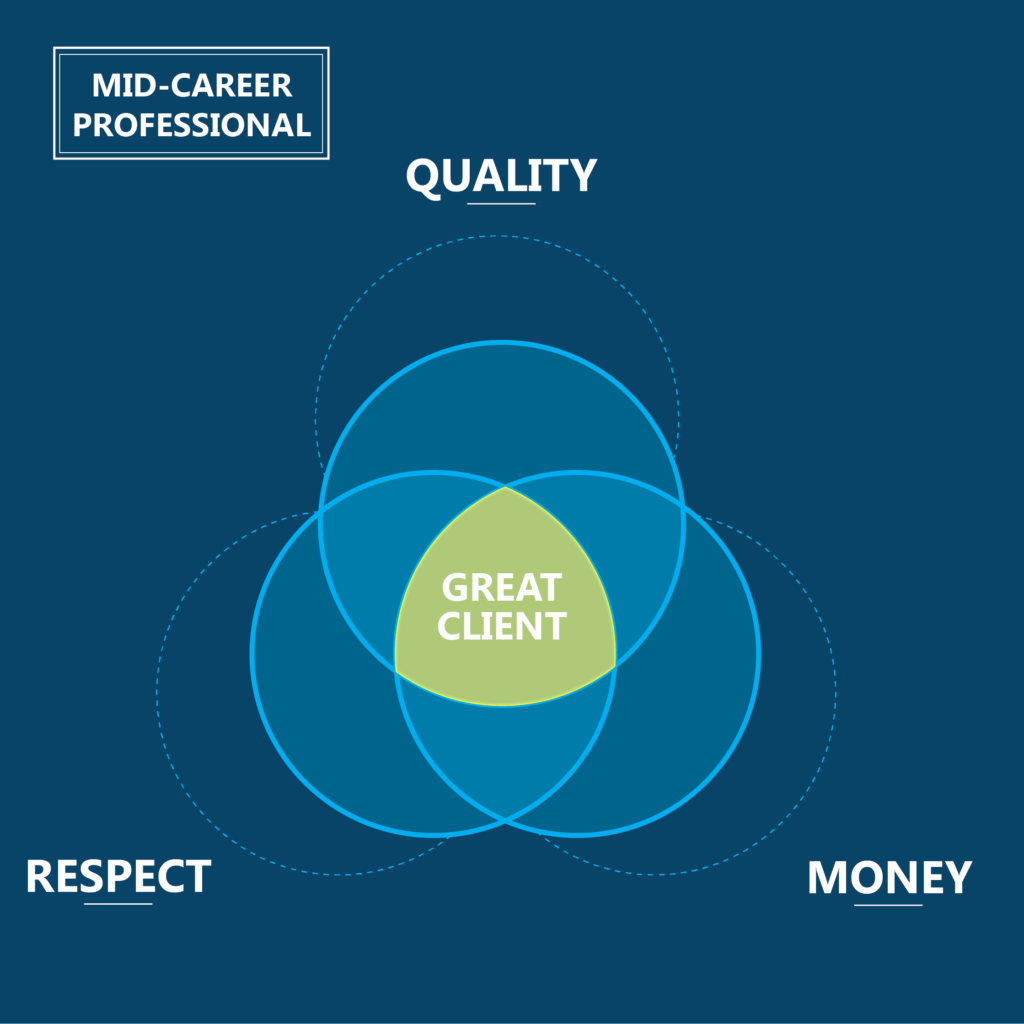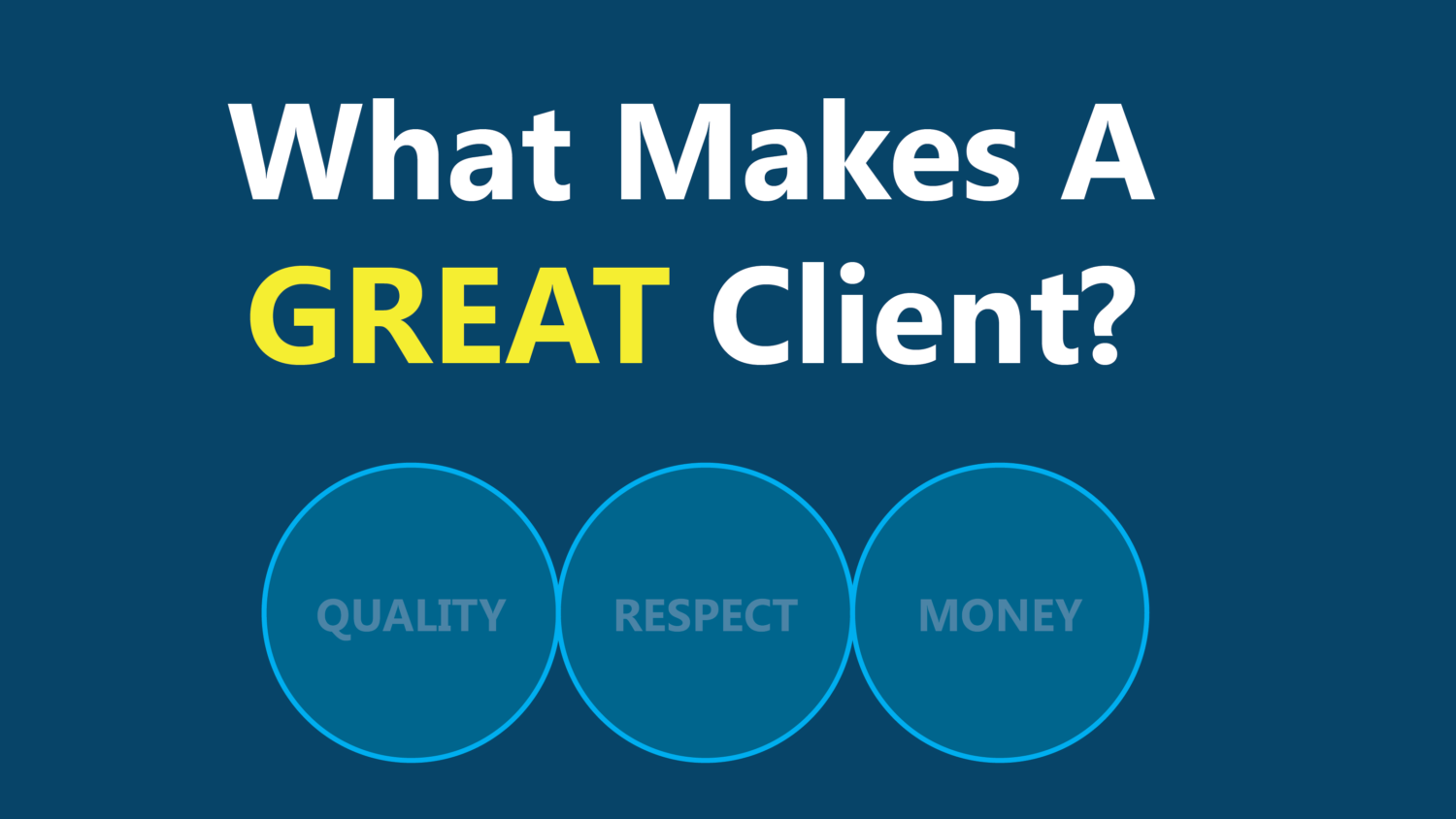What Makes A Great Client?
If you’ve been in this photography game for any amount of time, you most likely have some clients that you love, and perhaps a few who you’d be happy to never meet again.
Having high-quality clients is the bedrock of a fruitful career. Without clients, photography is just your hobby. And without good clients, photography will feel more like a means to an end rather than a passionate pursuit that just so happens to be your profession.
As each of us progresses through our career, we not only strive to continuously improve our craft, but equally as important is that we also endeavor to work for better and better clients. So that got me thinking, what makes a good client? How does the quality of our clients evolve throughout our careers?
For me personally, there are plenty of traits I desire in a client, but these can be broadly grouped into three different categories: Quality, Respect, and Money.
Quality

First and foremost, a good client designs good projects. A quality design gets us excited to do our job. The thought of spending time within a well-designed building is one of the greatest joys of our profession. The anticipation of an upcoming shoot is made so much more enjoyable when we know it has the potential to end up in our portfolio.
Where the project is located also has a lot of bearing on quality for me. Capturing a project in the heart of a major metropolis or one nestled into a breathtaking landscape is an important factor.
In addition to the design and the site, I also place a lot of importance on how the client’s vision was executed. A poorly detailed building is not only no fun to shoot, but it can become a headache to edit as well. The best clients are the ones who have a proven track record of not only conceiving of inspiring designs, but also delivering well-executed built results.
Finally, how a building is ultimately operated also makes up a big part of the quality puzzle. Your architect or interior designer client can design a gorgeous project, but it’s up to their client to manage it in a professional way that respects the original design intent. There’s nothing more disappointing than a beautiful building that’s been neglected by its owner. The best clients have great clients themselves.
Respect

Relationships should always be based on mutual respect and the one between the client and photographer is no different. Clients who are engaged in the process, but not overbearing, are a pleasure to work with (and unfortunately not always easy to come by). Nobody likes being micromanaged, especially when you feel like your creative input is being stifled. Being engaged but not oppressive is a delicate balance that not all clients are able to achieve — but the good ones do.
Great clients are passionate about the buildings or spaces they designed but also understand that your creative vision has the potential to bring the imagery to new, perhaps unforeseen heights. It is in these types of well-balanced client-photographer relationships where the presence of each party collectively brings additional value to the photo shoot. We want clients who see us as collaborators and not simply vendors or service providers. When that’s the case, respect, value, and contribution begin to reciprocate. When each side can recognize what the other party brings to the table, beautiful things happen.
Clients who can communicate their vision and expectations clearly are generally a joy to work with. Whether or not you receive a proper photography brief has proven to be a fairly reliable litmus test for me on whether or not a particular shoot is going to be a worthwhile pursuit. A good early indicator of an engaged client is whether or not they took the time to put together a brief that clearly explains the design and which aspects of it are important to them. Two red flags to look out for are ones that don’t provide much in the way of a brief or, at the opposite end of the spectrum, provide one that is so prescriptive that it doesn’t leave much room for you to bring your own creative vision into the project. We’ve all probably received the dreaded request – “We just need photos taken at exactly the same location as our renderings.“
Finally, a great client respects that the photos are your intellectual property and treats them as such. This means that they understand and respect that you own the copyright to the images that you create. It means that they do not distribute your images to third parties. It also means that they always provide credit to you whenever they publish your work, be it in digital or print media.
Money

Lastly and perhaps most obviously, clients who compensate their photographers fairly for the skill, talent, time, and effort they bring to the table are the people you want to build your business around. There’s nothing more soul-crushing than undervaluing yourself and taking on a job with a fee that is misaligned and below the value you can provide. A healthy fee does so much more than just keep your business in the black. Before you even pick up your camera, it demonstrates that your client has a level of trust in your abilities. This enables you to head into the shoot with confidence, not needing to worry about whether your client believes you’re up to the task at hand. Additionally, knowing that you’re getting paid at a rate you’re happy with is a motivating force. We are all incentivized to do our best work when we’re motivated.
Tread carefully with a client who asks for a discount right out of the gate. This is very often a warning sign. Negotiation is a normal part of doing business, but a client whose first move is to try to get you to devalue yourself is someone to potentially be wary of. The same can be said about a client who pushes back against you requiring a retainer before the shoot or one who needs to be chased down to pay their invoices long after all the work has been done.
Career Evolution
Okay, so we’ve established what I believe makes a great client, but it’s unrealistic to expect to have a roster of those types of clients when you’re just starting out. Let’s now take a look at how the quality of our clients should evolve over a successful career in photography.

Career Beginner

When you begin your career, your two biggest weapons are passion and hopefully a bit of natural talent. Your goal is to get your foot in the door, and you don’t have the luxury of being super discerning when it comes to who you get to work for. You need to prioritize gaining on-the-job experience over being picky about the project you’re shooting.
Because of this, don’t expect to be able to find clients that fulfill all of the Quality/Respect/Money criteria we just laid out above. You may land a shoot with a respectful client, but the quality of the project is mediocre, and the fee will be commensurate with your lack of experience. And that’s okay, everyone starts somewhere.
Things you may hear during this phase of your career:
“Thanks for sending us your portfolio, can I ask if any of these were commissioned?”
“We like your work, but we’re content with our current photographer.”
“Since you haven’t shot this type of project before, would you be willing to shoot it on spec?”
“Can we get a first-time friendly discount? By the way, we have a lot of potential future projects in the pipeline.”
Mid-Career Professional

As your career progresses, so too should the quality of the clients you work with. After several years, you’ll have built up the experience, portfolio, and confidence necessary to begin approaching better and better clients. The circles in the Quality/Respect/Money begin to converge and that’s a beautiful thing. Congratulations, the benefits of all the hard work you’ve put in are not beginning to snowball.
Things you may hear during this phase of your career:
“You were recommended to us by XXX. We have an upcoming need for a professional photographer, are you interested in quoting for the job?”
“Hi there, we recently saw some of your work published online and we really like your style. Can you send us your rate sheet?”
“Thanks for sending us your portfolio. It looks great and it’s nice to see some projects in there that are similar in type and size to the work we do. Can you come into our office next week to discuss a potential collaboration?”
Seasoned Veteran

Eventually, you’ll reach a point in your career where the circles converge further and the percentage of your client base that is considered ‘great’ will increase. By now, you’ve been able to weed out those less-than-desirable clients. At this point, your door may be the one being knocked on and not the other way around. Your reputation precedes itself and clients are now seeking you out based on the breadth of your experience in the industry. You’re filtering out job inquiries that don’t align with what you want to shoot. The quality of your work has reached an elite level, and the fees clients are willing to pay you reflect that. You’ve made it.
Things you may hear during this phase of your career:
“This is our most significant project to date, and we are hoping that your creative eye can help us maximize the likelihood of publication.”
“Awards season is upon us, and we think we have a couple projects that are worthy of recognition. You have a track record of helping architects getting the acknowledgement they deserve. Are you interested in working with us to help achieve those goals?”
“Sure, we understand you’re busy. Let’s push back our shoot until next month when you’re available.”
Do you agree on what makes a great client? What other traits would you like to see in an ideal client?
How far along are you in your career and is there anything holding you back from getting great clients?
Let us know in the comments below!
